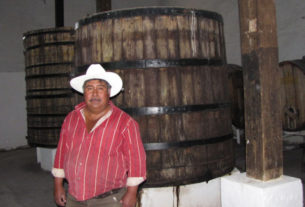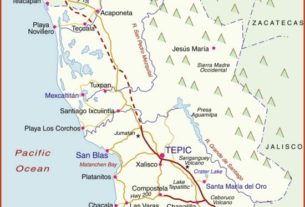“Mexifornia,” to quote the author, “is about the nature of a new California and what it means for America – a reflection upon the strange society that is emerging as the result of a demographic and a cultural revolution like no other in our times.” Thus Victor Davis Hanson opens his close examination of what is going on in his home state. He suggests, too, that there are other “states of becoming”, like “Mexizona”, “Mexichusetts”, and more.
He points out in several ways that although there’s heavy duty immigration going on, there’s not a whole lot of integration taking place. For instance, even legal immigrants from Mexico rarely become citizens. Of all those admitted legally to the U.S. since 1982, only 20 per cent had taken the trouble to become citizens.
For the campesino from Mexico there is little physical amputation from Mexico, simply because of the physical proximity of Mexico. Unlike immigrants from places like China, Korea, Spain and the Punjab, the Mexican can easily return to his roots. Thus, he or she rarely fully embraces the U.S. as the new “home”.
At the heart of the problem with the U.S. is that Mexican elites rely on immigration to the U.S. as a way of getting rid of potential critics and malcontents and avoiding domestic reform. Market capitalism, constitutional government, the creation of a middle-class ethic or an independent judiciary stand little chance of coming to Mexico as long as there is this northward exodus. The mass outflow is simply a ‘safety valve’ for the maintenance of the status quo.
Another factor – one that is financially beneficial for the Mexican government – is that the remittances from the illegal aliens amount to billions of dollars annually and help prop up the Mexican economy.
From the U.S. perspective there are benefits for some people in maintaining the status quo. Corporations, contractors and agribusinesses enjoy the endless supply of cheap labor, regardless of the social consequences. Meanwhile, the “progressives”, academics, journalists and some government people see illegal aliens as a vast potentially powerful new political constituency.
Each year over 1.5 million aliens are apprehended attempting to enter the U.S. illegally. Perhaps ten times that number never are caught, although no one knows the exact figures. At present rates of birth and immigration, by 2050 there will be 97 million Hispanics who will constitute one quarter of the U.S. population and well over half the California population.
Hanson himself is a long-time resident of California. He’s a classicist at California State University, Fresno, and the author of several books, mainly military histories. But what really brings this book to life is that he also runs a family farm in the Central Valley. He knows first hand what he is talking about. He obviously knows about hiring casual workers and raising crops and even about selling produce at a roadside stand. He’s had a great deal of close contact with the people he’s writing about and has many personal tales to tell, some of them genuine horror stories.
He’s had thefts over and over on his property. He has given up using the rural mail box outside his house because the flag denoting the presence of mail – either coming or going – simply seems to be an invitation for pilferage, regardless of what the mail item may be. On five occasions he’s had drunken aliens veer off the road and drive at high speed into the rows of his fruit trees and then abandon their wrecked cars, doing around $5,000 property damage each time.
Hanson writes of “all-Mexican” towns and mentions one former Mexican resident of Mendota – one such community – who left “when the last white people left.” In another such community, Parlier, another such citizen spoke of transferring all his children to nearby Kingsburg schools “where there are lots of white people.” That’s an aspect that takes you a bit by surprise in this book, the openly racist talk, originating from Mexicans themselves.
He also talks about the various ways in which Mexicans are favored by the present laws. Californian-born youngsters have to present birth certificates when they apply for drivers’ licenses. No such documentation is required of aliens. University fees are inexpensive for California residents but out-of-staters pay a considerable amount. Aliens are excused those high fees. Thus, American citizens from, say, Arizona and Nevada who enrol in California colleges pay more than double what illegal aliens pay for tuition.
A similar situation exists in the medical field. Hanson mentions his local hospital emergency room which serves almost exclusively illegal aliens – presumably without charge. Then there’s the legislation that states that instant citizenship is granted to newborn infants of illegal aliens.
He looks at the various steps that can be taken to control the situation he describes. For example: “One solution would be to continue with the de facto open borders, but insist on rapid cultural immersion, and an absolute and immediate end to all ethnic chauvinism, bilingualism and separation.”
Another is simply to patrol the border more effectively and control legal immigration. A result of that would be that businesses would have to accept a permanent scarcity of unskilled workers. Californians would also pay more for their hotel rooms, lawn care and fresh fruit and would have to do more of their dirty work themselves.
A third way “would be to adopt sweeping restrictions on immigration and put an end to separatist ideology along with the two tier legal system for illegal aliens. In such a scenario, our present problems would vanish almost immediately, while prices for wage labor would steadily escalate.”
The fourth approach is the logical continuation of the present policy – presumably with better controls – which would lead to a true Mexifornia. He discusses such a possibility at length.
Despite the horror stories I didn’t find it easy to tell which side Hanson favors. Probably he’s more interested in seeing the mess cleaned up than in taking sides. I don’t think he’s anti-Mexican and yet it’s interesting to look at reader reviews of this book in Amazon.com. Quite a few of those readers label him “racist”. I also have a couple of friends who got very angry after reading Professor Hanson and who also used the “racist” label to describe him. I realize that, for some people, criticizing Mexicans is not the “in” thing to do. But I think if they had been subjected to some of the experiences that Hanson describes they wouldn’t be so sanguine either.
Personally I think he’s probably telling it like it is and is more concerned about “fixing” the overall problem than in taking sides. After all, he has just as many nasty things to say about some of the state’s legislators and others who have helped create the mess as he does about Mexicans. I don’t hear the critics complaining about those accusations.
In my humble O: It’s a wonderful book for provoking some good heated discussions.
Mexifornia – A State of Becoming
By Victor Davis Hanson
Encounter Books, San Francisco, 2003
Available from Amazon Books: Paperback


